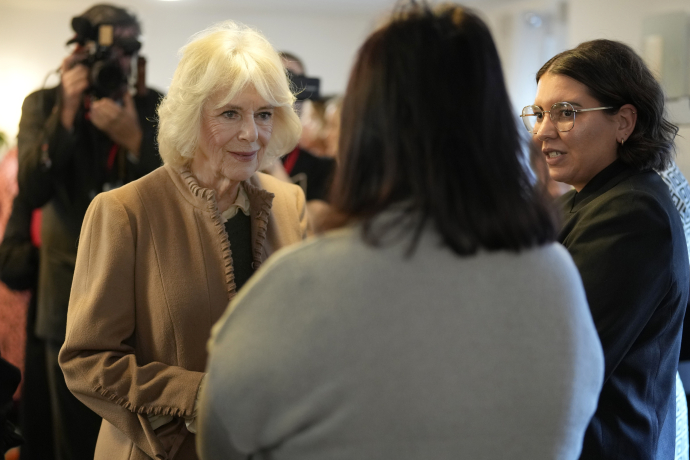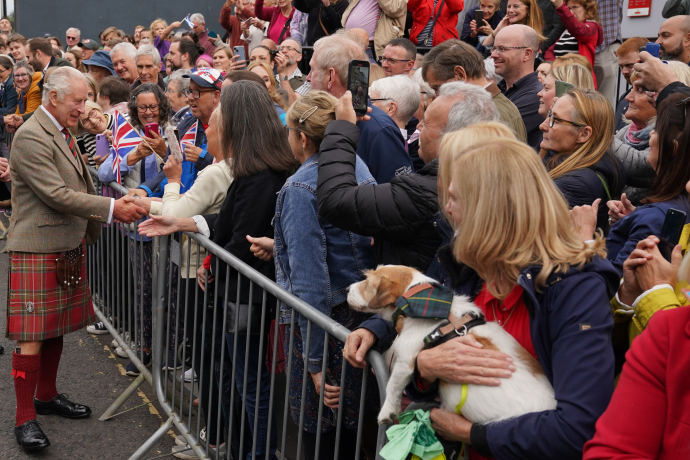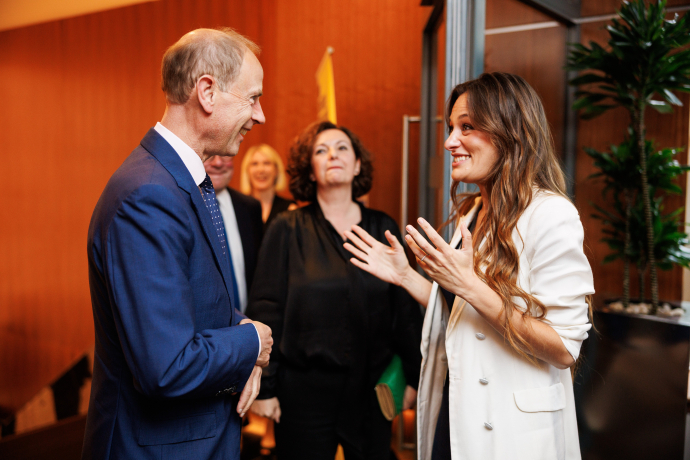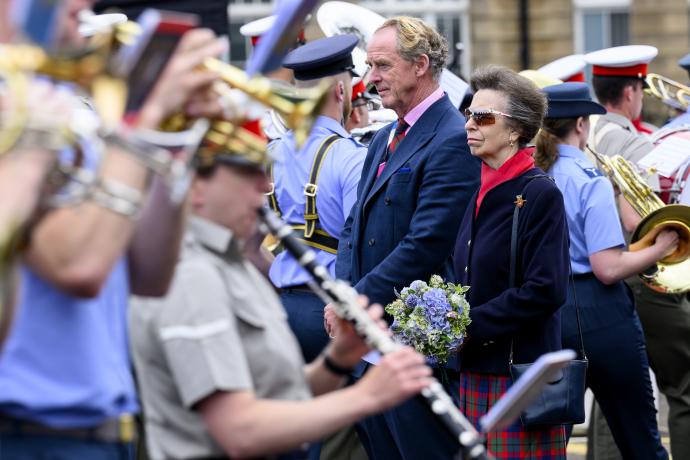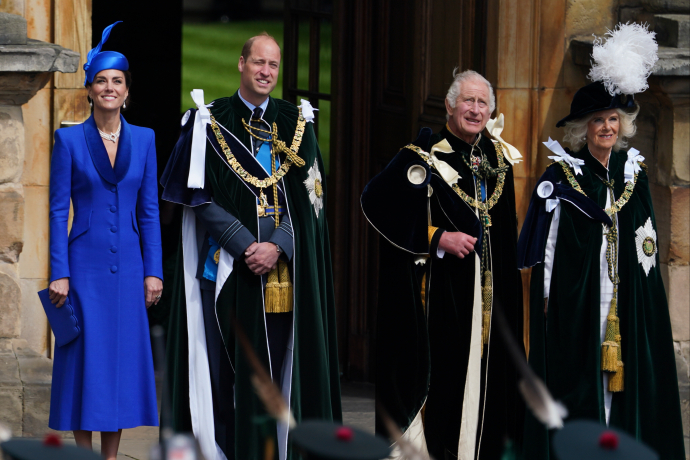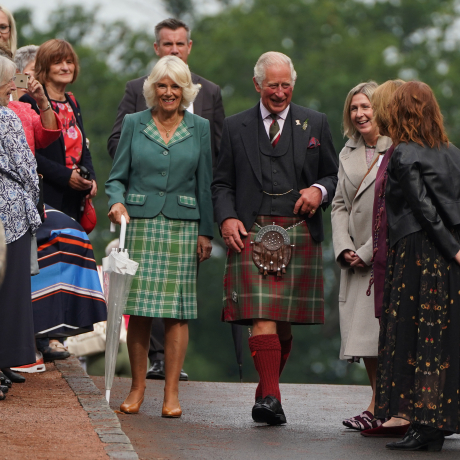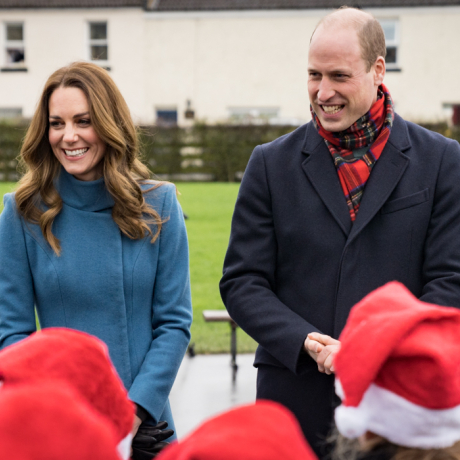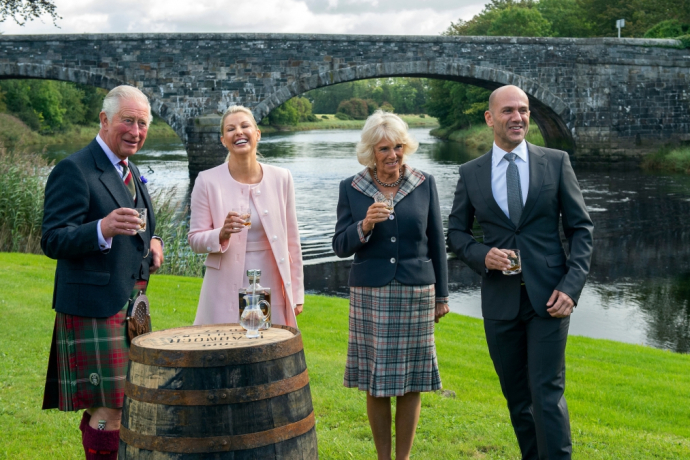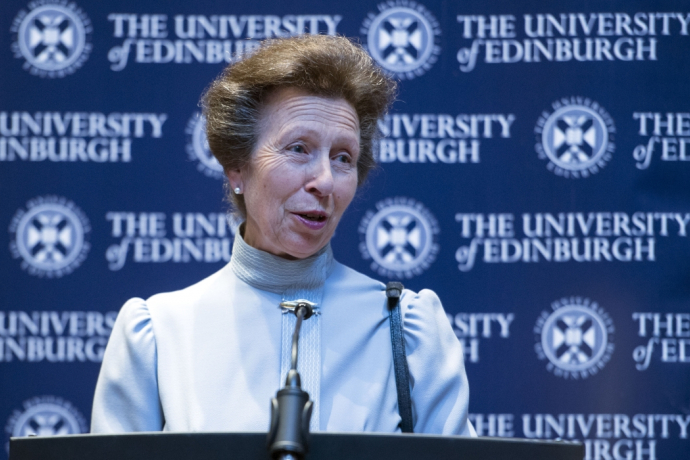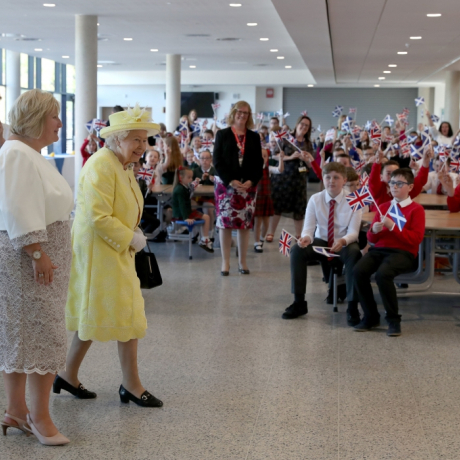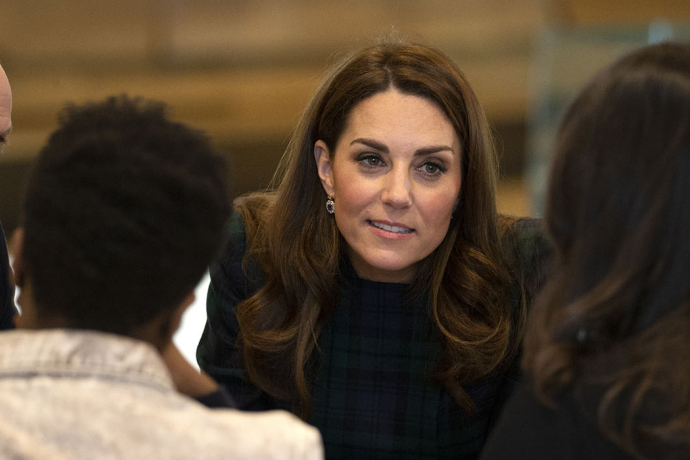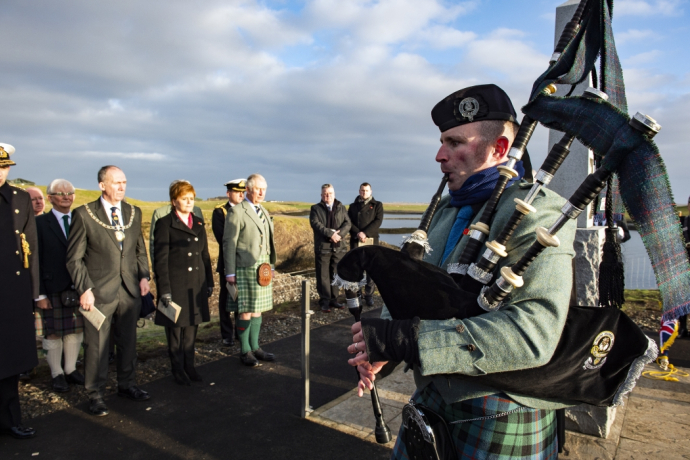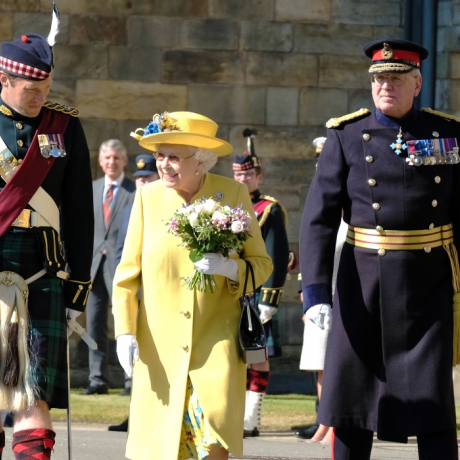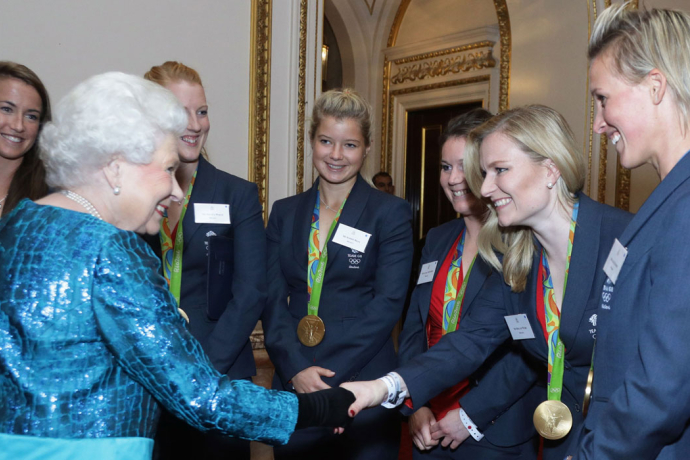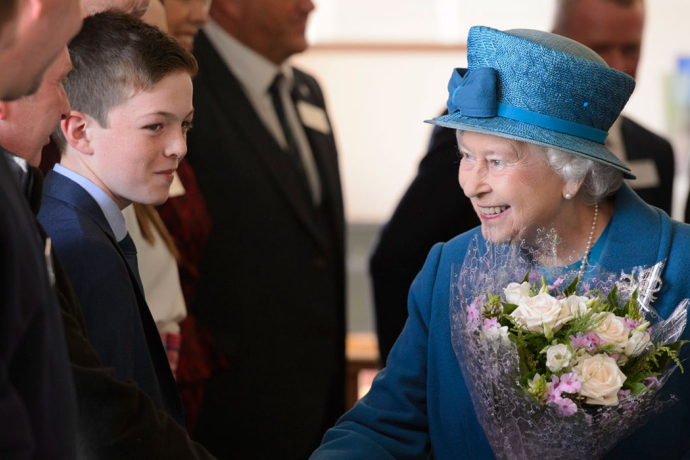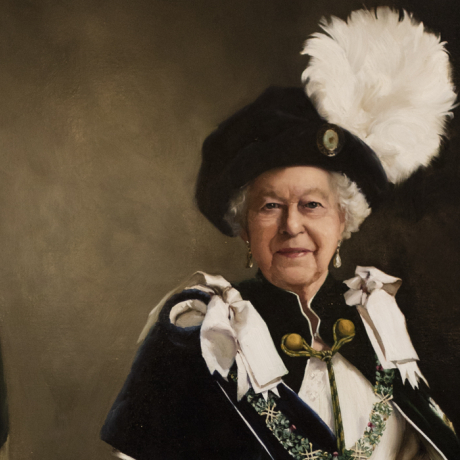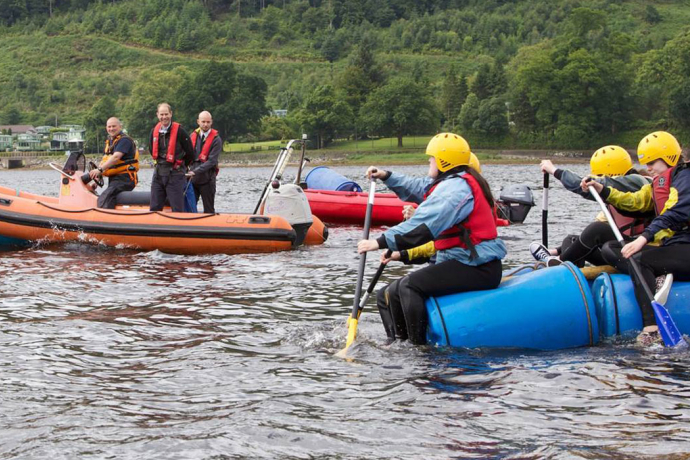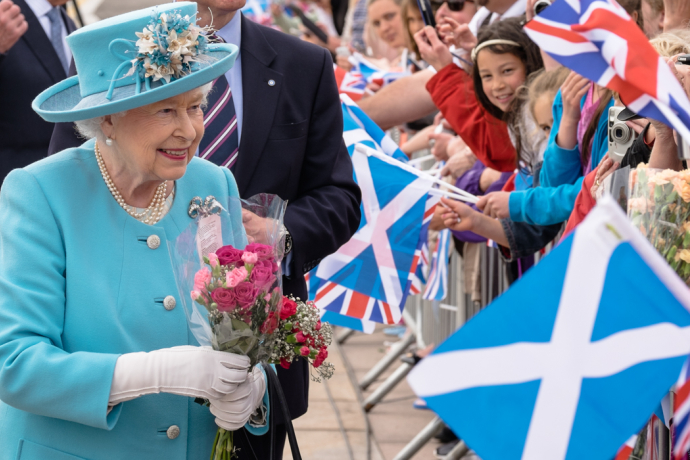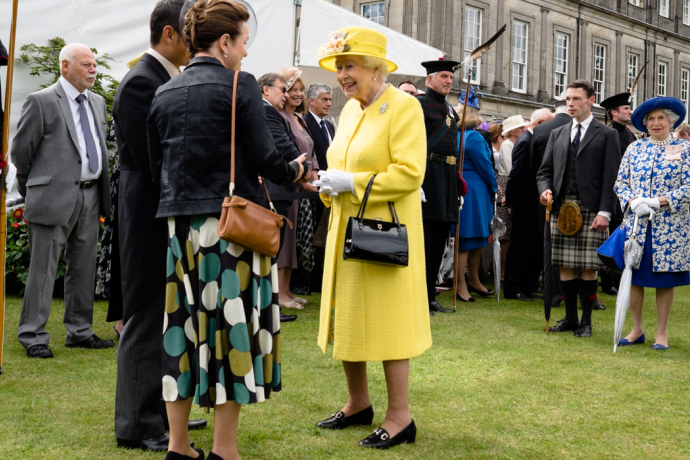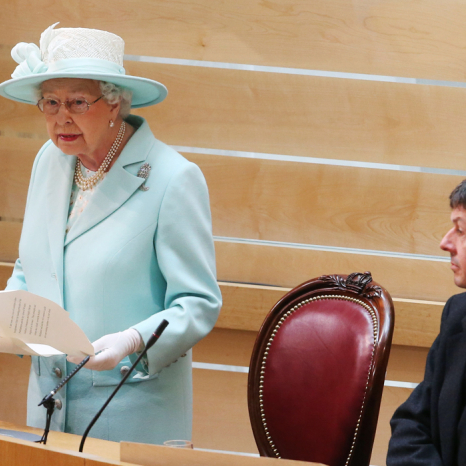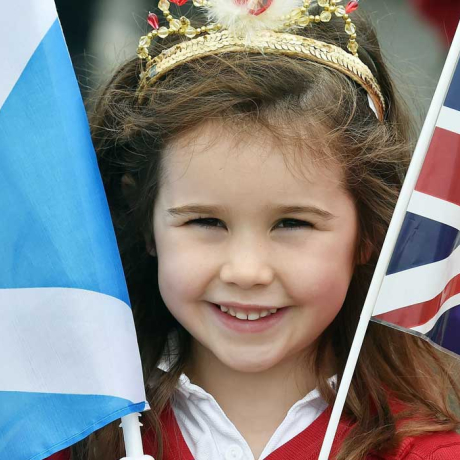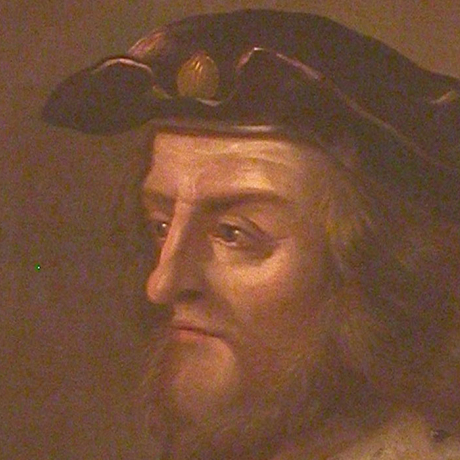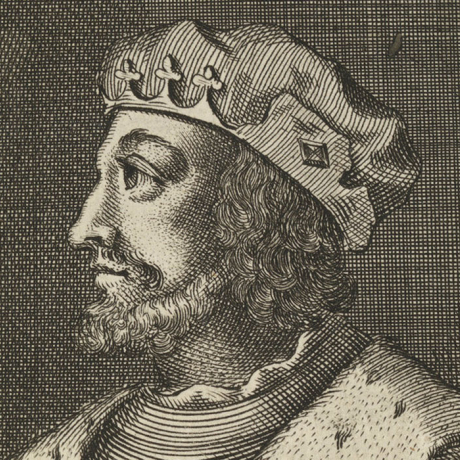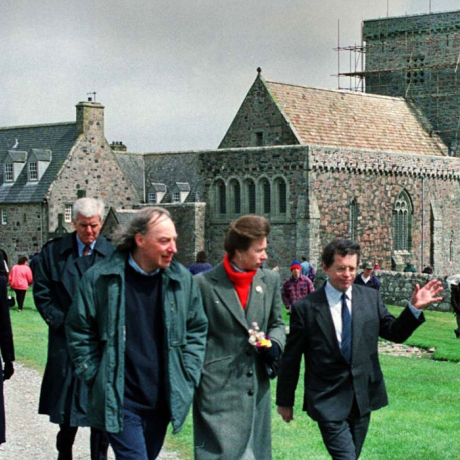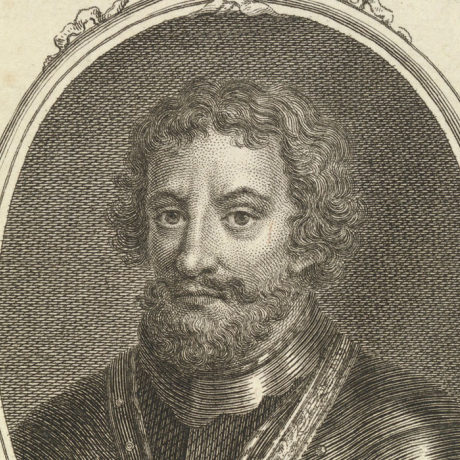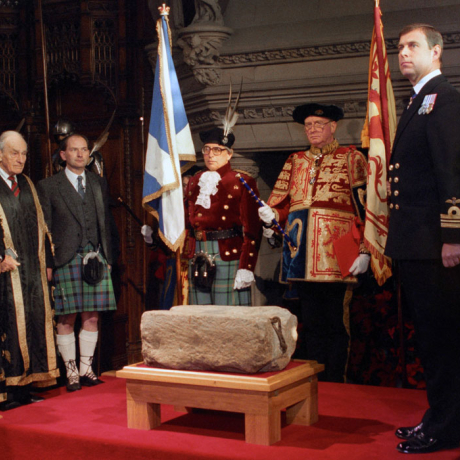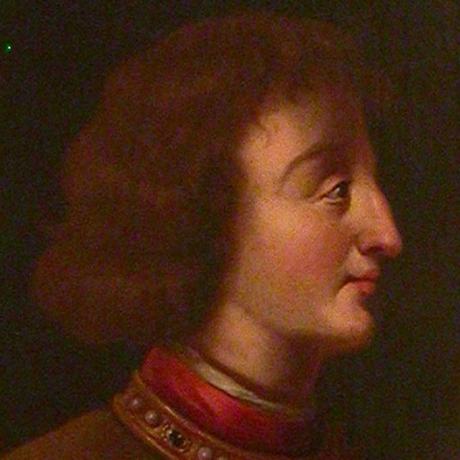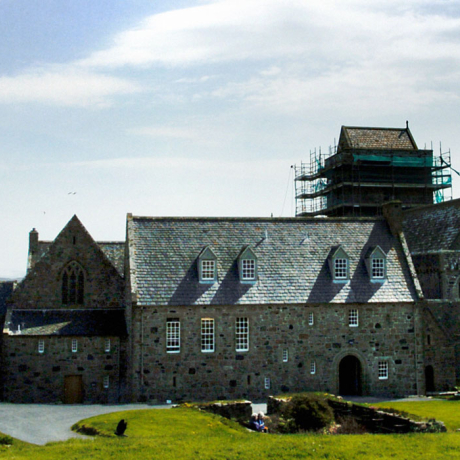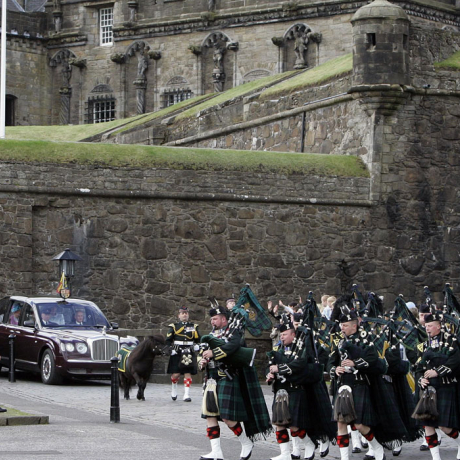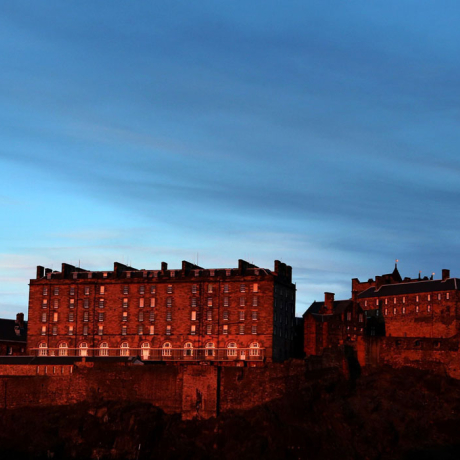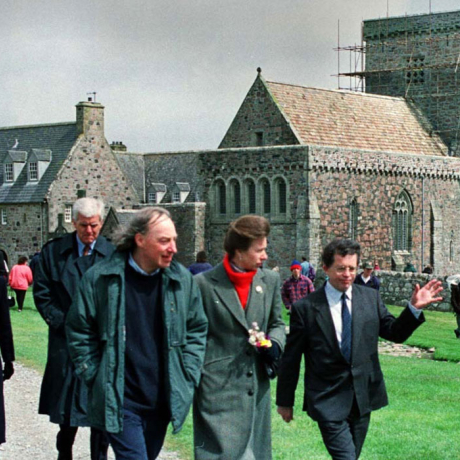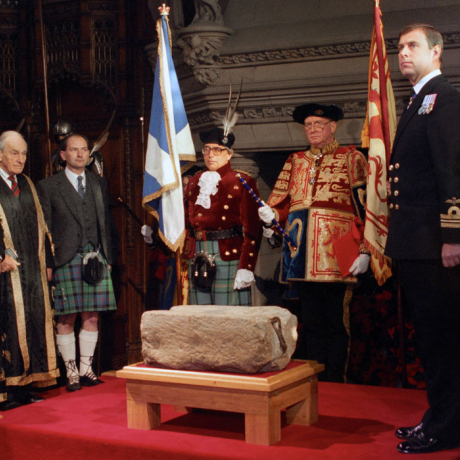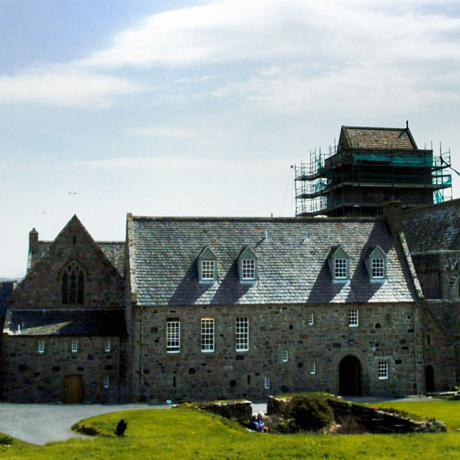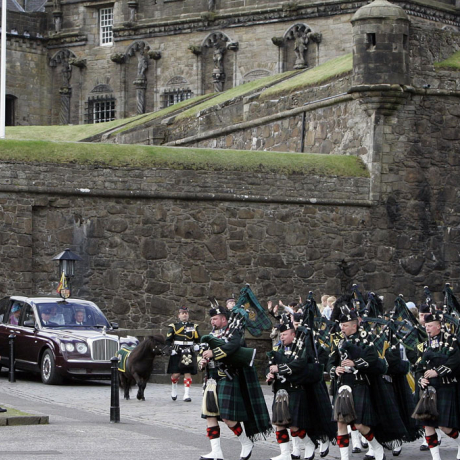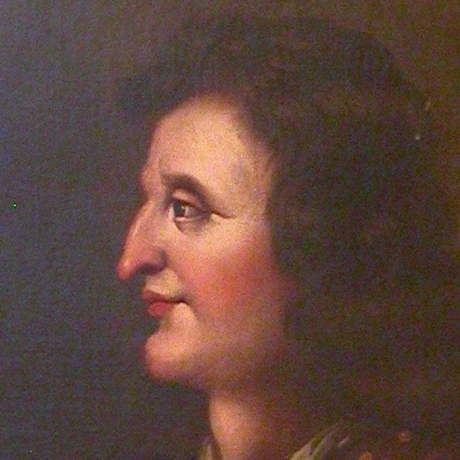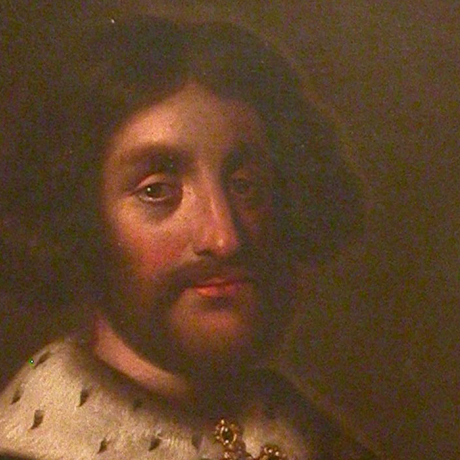The Honours of Scotland are the oldest regalia in the British Isles.
The crown, the sword and sceptre date from the late fifteenth and early sixteenth century, during the reigns of James IV and James V, the grandfather and father of Mary Queen of Scots.
According to tradition, the silver-gilt sceptre was a gift in 1494 from Pope Alexander VI to James IV, as a mark of papal support for Scotland as a 'special daughter' of the Holy See.
Remodelled and lengthened in 1536, the sceptre's finial features small figures of the Virgin and Child, St James and St Andrew within Gothic canopies, flanked by stylised dolphins (symbolic of Christ's Church). The sceptre is topped by a polished globe of rock crystal.
The Sword of State was another generous papal gift, presented to James IV in 1507, from Julius II (who commissioned Michelangelo to paint the ceiling of the Sistine Chapel). Almost 1.4 metres long, the silver-gilt handle is decorated with oak leaves and acorns (symbols of the risen Christ), and at the bottom of the handle are two stylised oak leaves overlapping the blade.
The blade is etched with the figures of St Peter and St Paul and Pope Julius's inscription. According to tradition, the break in the blade is due to the sword being snapped in two in 1652 so that it could be smuggled away from Cromwell and his troops.
The sword has a scabbard of wood covered in dark red velvet and mounted with silver gilt, and a belt of woven silk and gold thread decorated with the arms of Pope Julius. The sword was subsequently used in the ceremonial connected with the Order of the Thistle, until the 300th anniversary of the Order in 1987.
The Crown of Scotland was made in its present form for James V, refashioned in 1540 from a damaged and lighter crown, by an Edinburgh goldsmith, John Mosman. James wore it to his consort's coronation in the same year at the abbey church of Holyrood.
The circlet at the base is made from Scottish gold, encrusted with 22 gemstones and 20 precious stones taken from the previous crown. Freshwater pearls from Scotland's rivers were also used. The crown weighs 1.64kg.
The Honours as coronation regalia were first used together at the coronation of the nine-month-old Mary, Queen of Scots in 1543, and subsequently at the coronations of her infant son James VI (and I of England) at Stirling in 1567 and her grandson Charles I in 1633 at the Palace of Holyroodhouse.
Despite his success at the Battle of Dunbar in 1650 and his subsequent occupation of Edinburgh Castle, Oliver Cromwell failed to stop the coronation of Charles II in 1651 at Scone (the last coronation in Scotland).
Determined to destroy the Scottish Crown Jewels, just as he had disposed of the English regalia, Cromwell pursued the Honours to Dunnottar Castle near Aberdeen. He failed. From there, they were smuggled out for safe burial until Charles II's restoration in 1660.
The Honours were never again used to crown a sovereign. Until the Treaty of Union in 1707, and in the absence of a resident monarch, the regalia were taken to sittings of the Parliament in Edinburgh to signify the Sovereign's presence and his or her consent to the passing of each Act.
After the Union, when the new United Kingdom Parliament met in London, the Honours had no ceremonial role. They were locked away in an oak chest in the Crown Room at Edinburgh Castle. In 1818, the chest was opened in the presence of the Castle Governor and the author Walter Scott. They discovered the Honours were still there in their linen wrappings.
During the Second World War the Honours were hidden once again. They were buried in 1941 at separate locations in the Castle as a precaution against possible German invasion.
The Honours were removed once from the Castle in 1953, to be taken to a National Service of Thanksgiving at the High Kirk of St Giles in Edinburgh. During the ceremony they were formally presented to The Queen, who then returned them to their custodians.
Since 1819, the Honours have been on public display in the Crown Room at Edinburgh Castle, together with the Stewart and the Lorne Jewels. The Stone of Scone was added in 1996, after 700 years in Westminster Abbey.
The last time the Honours of Scotland were used for a coronation was to crown Charles II at Scone in 1651.

